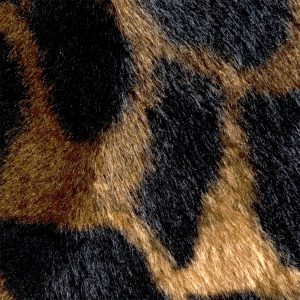Modacrylic was developed in 1949 as a modification of acrylic, as its name implies. The first maker was Union Carbide Corporation, under the trade name Dynel. Like acrylic, modacrylic was created to give a wool-like feel, and has been especially used for items that require inflammability, such as wigs. In clothing, its most notable use is fur-like fabric.
The U.S. Federal Trade Commission defines modacrylic as “a manufactured fiber in which the fiber-forming substance is a long-chain synthetic polymer composed of less than 85% but at least 35% by weight of acrylonitrile units, except fibers qualifying under rubber and anidex.”
